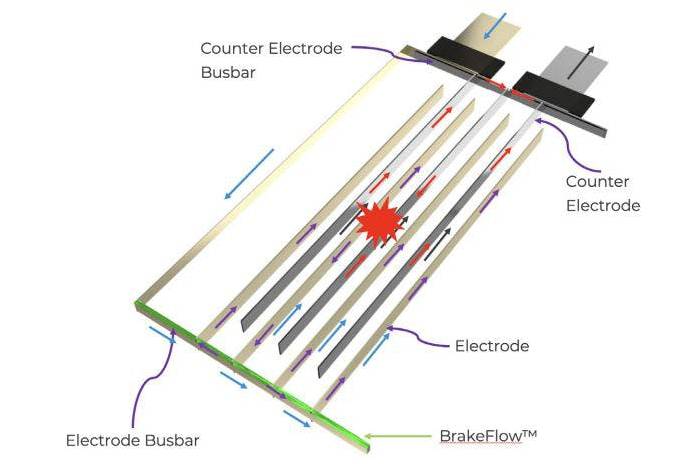Enovix battery architecture including its exclusive BrakeFlow™ system enables 100-percent silicon in their silicon/lithium electrodes and prevents battery fires. Battery fires, particularly on or in an airplane, are potential disasters. One such incident occurred recently on United Air Lines flight 2664 planned from San Diego International Airport to Newark New Jersey’s Liberty International Airport.
Things went awry when a battery pack in the passenger compartment started to smoke and caught fire. Seven passengers were injured, four of whom were hospitalized. The Boeing 737 Max 8 was just starting its flight, turned around, and landed back at San Diego after only 10 minutes in the air. Taxi times were greater than the flight time. It was probably more than a bit scary for the passengers and crew.
As explained in the NBC video, battery fires are increasing in number, probably because of the increasing number of electronic devices that use lithium batteries.
Based in Fremont, California, Enovix, has developed an architecture that uses strips of silicon neatly packed in a horizontal array and constrained within a stainless steel enclosure. Squeezed in top and bottom, the silicon strips do not expand over about two percent, and because each strip is so thin, this seems to help avoid the crumbling that plagued earlier efforts with silicon.
Enovix explains, “The Enovix integrated constraint keeps particles under constant stack pressure, limiting particles from electrically disconnecting and cracking.” The following video explains the manufacturing process that combines existing technology with their own systems that can be integrated into the total process.
A company white paper (that doesn’t seem to yield anything but a 404 notice) ostensibly explains “how the 3D cell is divided into many sub-cell units, each having a discrete connection to a laser-cut common anode or cathode busbar.” Enovix’s BrakeFlow system limits discharge current in case of a short. In any event, Chairman T. J. Rogers explains everything below.
Enovix BrakeFlow architecture is a system that includes a resistor engineered with a set value—at the electrode-busbar junction (green). In the event of an internal short circuit (red), BrakeFlow regulates current flux from other areas of the battery to the short. This limits the flow of current and reduces the rate of heating.
Company Chairman T. J. Rogers goes into detail concerning Enovix technology, but especially the BrakeFlow system.
Enovix claims a high energy density of 900 Watt-hours per liter for up to 500 cycles. They currently make batteries for eyewear, wearables, cell phones and laptops, although they hope to expand into electric vehicles.
In short, “Enovix cell architecture is based on a silicon-lithium alloy electrode material assembled as a micro-matrix that offers much higher energy density, longevity, and safety. The cell’s unique 3D structure, combined with an integral restraint system, greatly reduces the mechanical expansion/contraction that can damage silicon-based electrodes during their charge/discharge cycles.”
Late Breaking News
February 21, Enovix and the Chinese Graphene company SuperC made this announcement:
“Specialty chemicals company Evonik has invested in battery specialist SuperC. The Chinese company is a provider of graphene materials that improve the range, robustness, charging speed, and service life of lithium-ion batteries.”
GreenCarCongress.com adds, “SuperC has developed an innovative process to produce few-layer graphene (FLG) and, in turn, pastes for electrodes in lithium-ion batteries. The addition of graphene increases the electrical and thermal conductivity of the batteries for faster charging and better overall performance. The batteries become also more temperature insensitive. This saves on cooling requirements and reduces the risk of fire.” Two firms working on making batteries safer and more durable can be a good thing for future developments.

